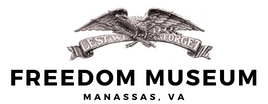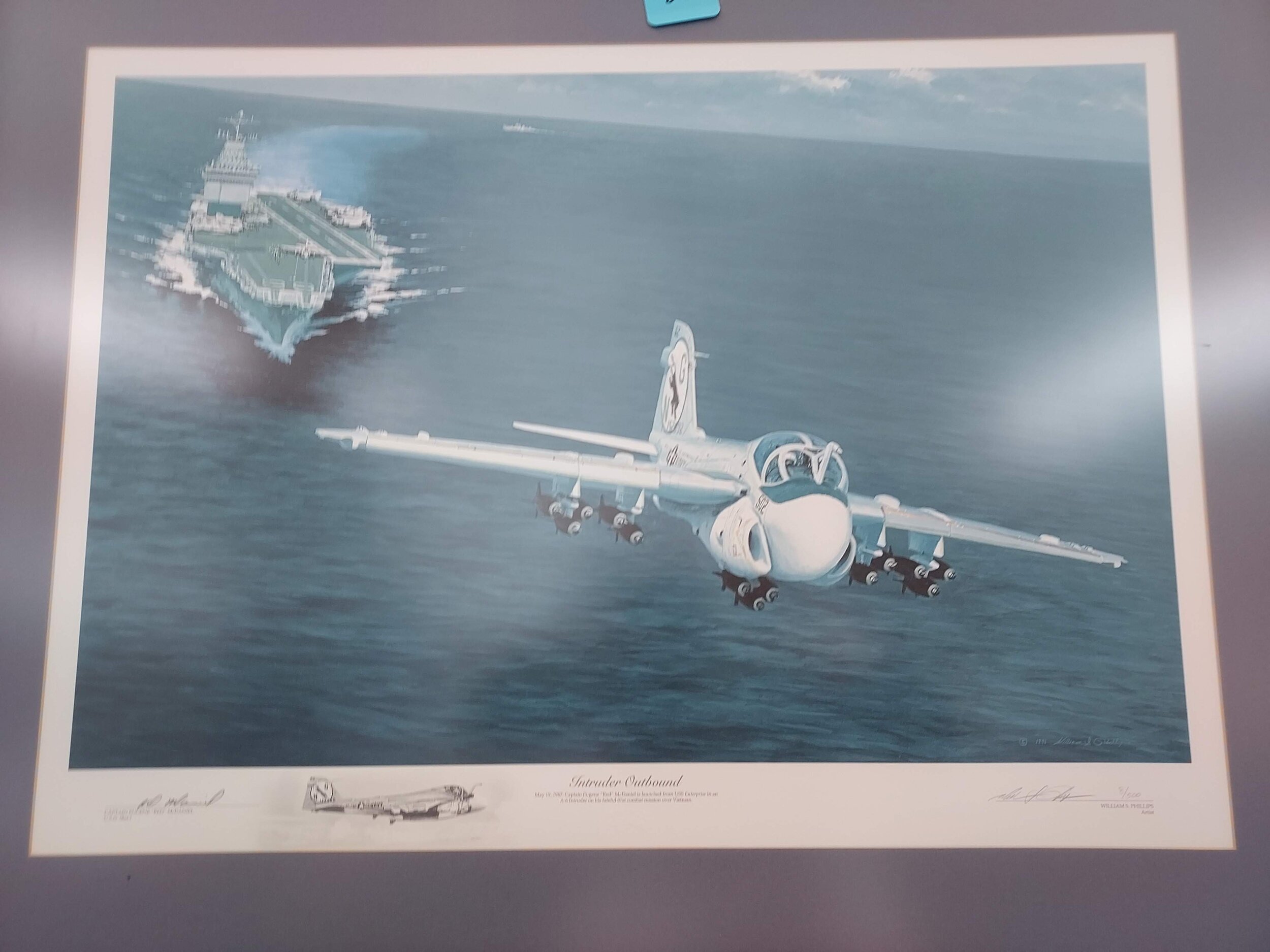Artifact Analysis: The Stories Behind the Art
“Pardo’s Push”
By S.W. Ferguson
During a bombing flight over Hanoi, Vietnam, where the 8th Tactical Fighter Wing, 433rd Tactical Fighter Squadron were trying to attack a steel mill, wingman Captain Earl Aman’s aircraft was badly damaged—mainly the fuel tank. As it quickly drained in mid-air, Aman knew he was in trouble of becoming a prisoner of war if he crash landed in Vietnam. Captain Bob Pardo made the decision that he couldn’t let that happen and defied typical orders. He told Aman to lower his tail hook, and Pardo positioned his plane directly underneath the tail hook in order to push Aman out over the ocean. There, he could land in the water where the Navy could rescue him, avoiding any enemy territory. Even though Pardo was reprimanded, because usually in that situation it would be acceptable to leave a soldier behind, he knew that sometimes you just have to do the right thing.
“Intruder Outbound”
By William S. Phillips
A-6 Intruder Jets were of the primary bomber aircrafts during the Vietnam War. This particular bomber is a special case, however, as its pilot is Navy Captain Eugene "Red" McDaniel. During his 81st combat mission over Vietnam, he took off from the USS Enterprise—one of the most technologically advanced aircraft carriers—and headed straight for Hanoi. In the midst of the chaos, his jet was shot down, he was captured and was held for the next 6 years. McDaniel endured torture in countless ways, and later was awarded the Navy’s second highest honor for his bravery, the Navy Cross.
“The Point”
By Larry Selman
As German defensive capabilities grew stronger and began building a force at Point Du Hoc in Normandy, France, the U.S. military determined a plan of attack. For a year, a team of Rangers, known as the U.S. Army 2nd Rangers, trained for the moment by learning how to climb cliffs in England—it was no easy task. Using grappling tools and mortars, they shot hooks to the top of cliffs that were hundreds of feet tall, using determination and extreme strength to make it to the top. On June 6, 1944, in the early morning of D-Day, the Ranger team used their training to storm Point Du Hoc and capture it from the Germans. The donor of this piece wanted others to be able to cherish their value, so that “younger generations can see, read and absorb the enormous sacrifice Americans made for our great country.”
Many of the Freedom Museum’s items are donated by local families to tell the story of veterans from Manassas, Manassas Park and Prince William County and their patriotic contribution to preserving our liberty. To see this artifact and much more, visit us at our brand new location.



